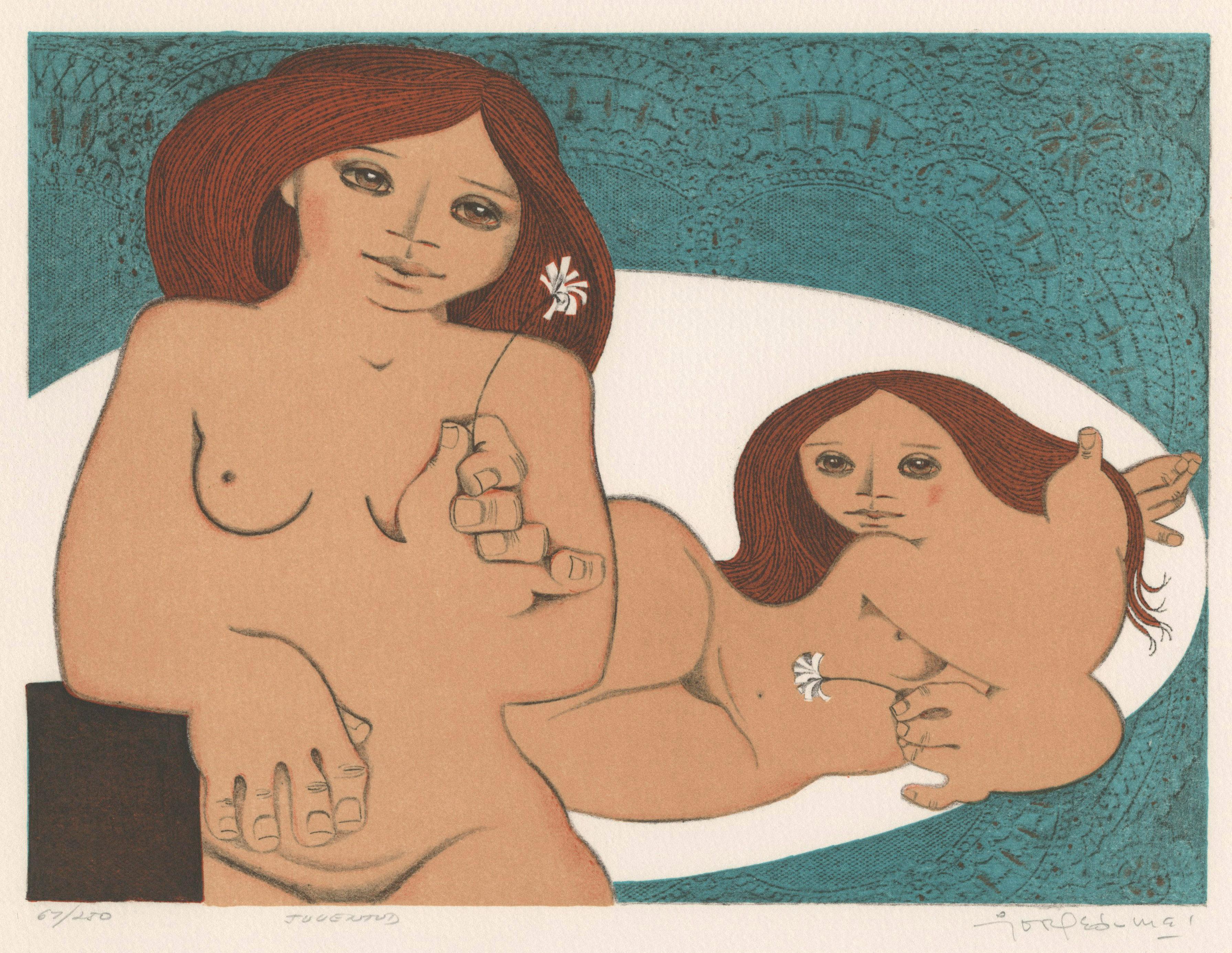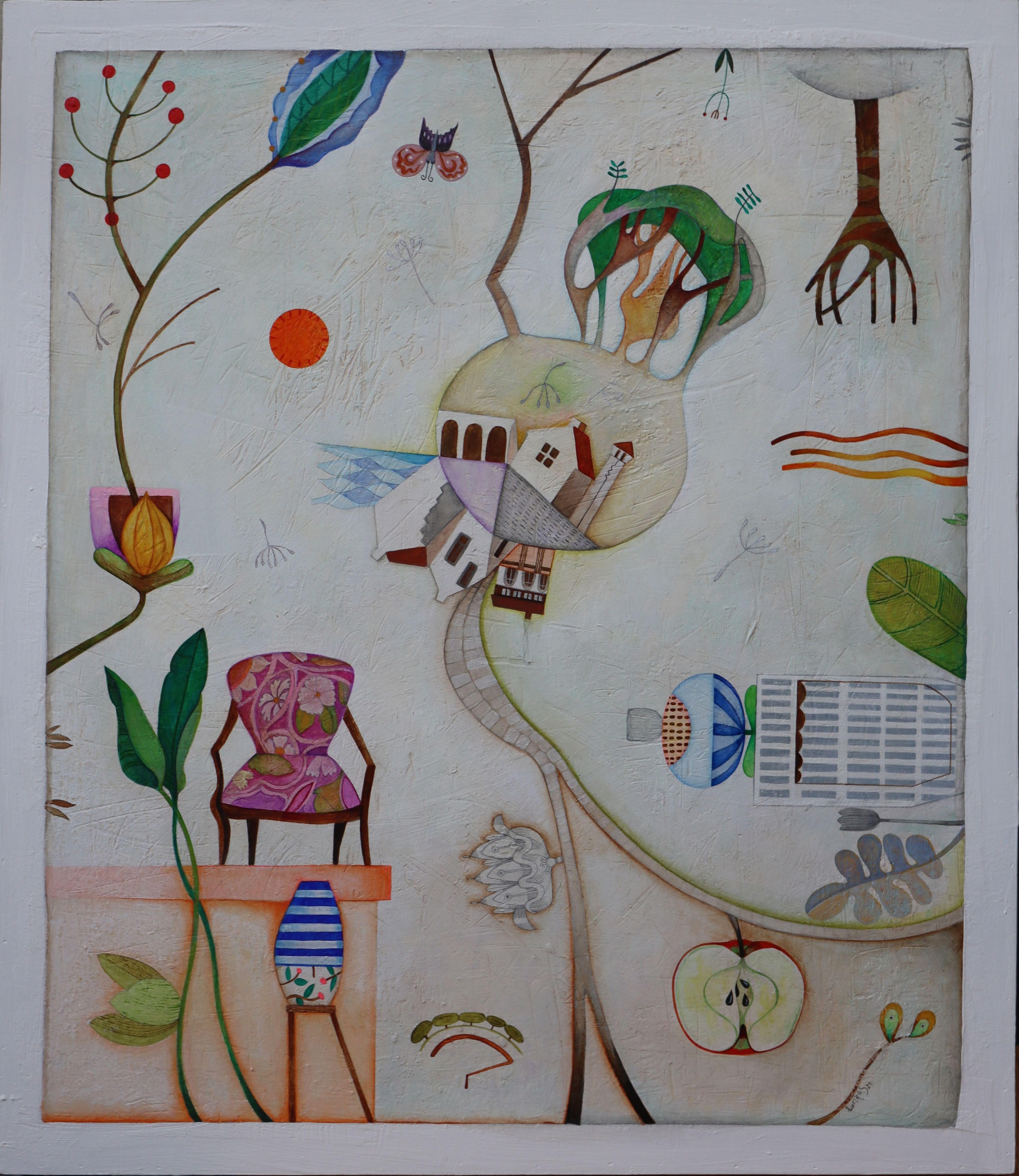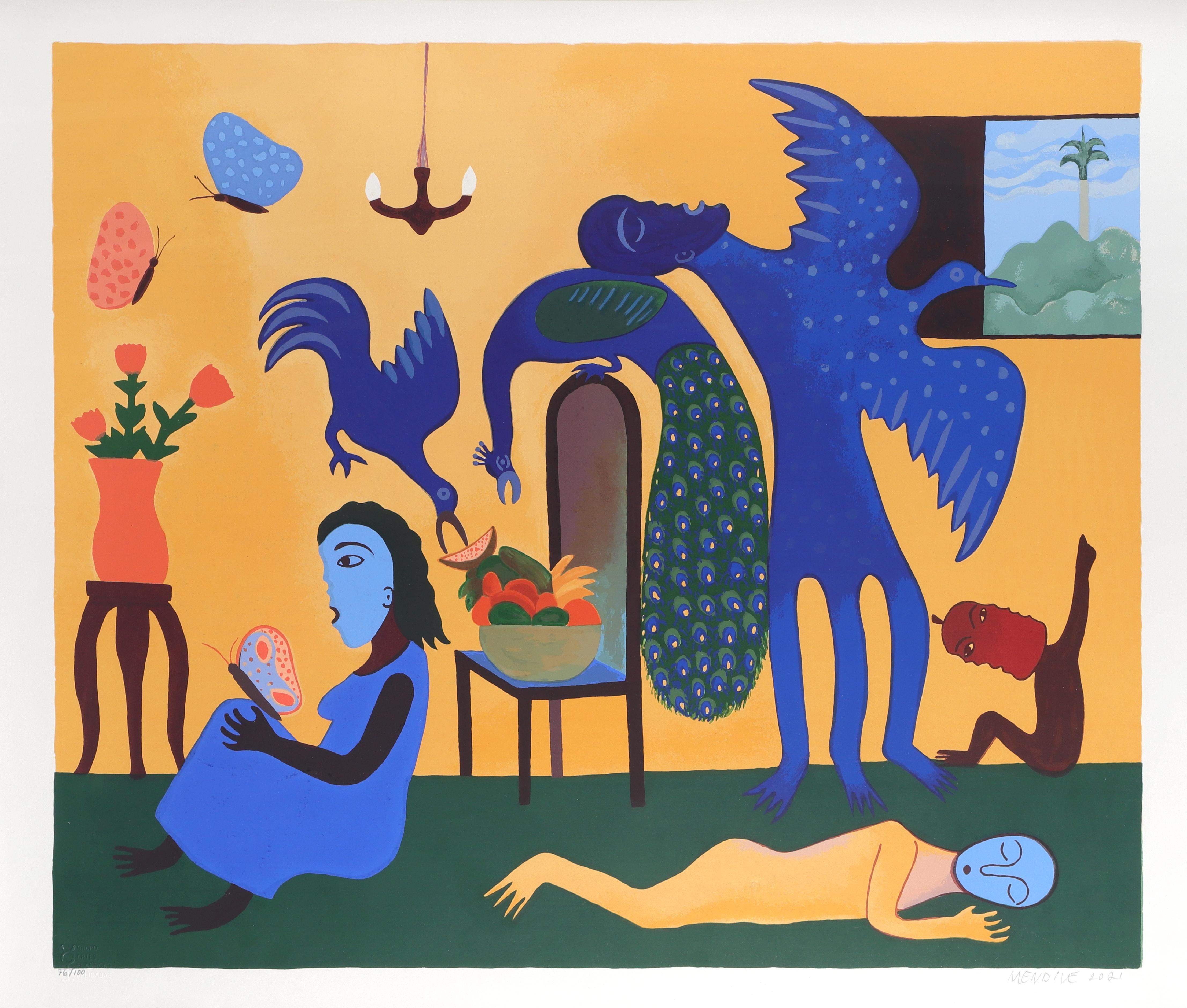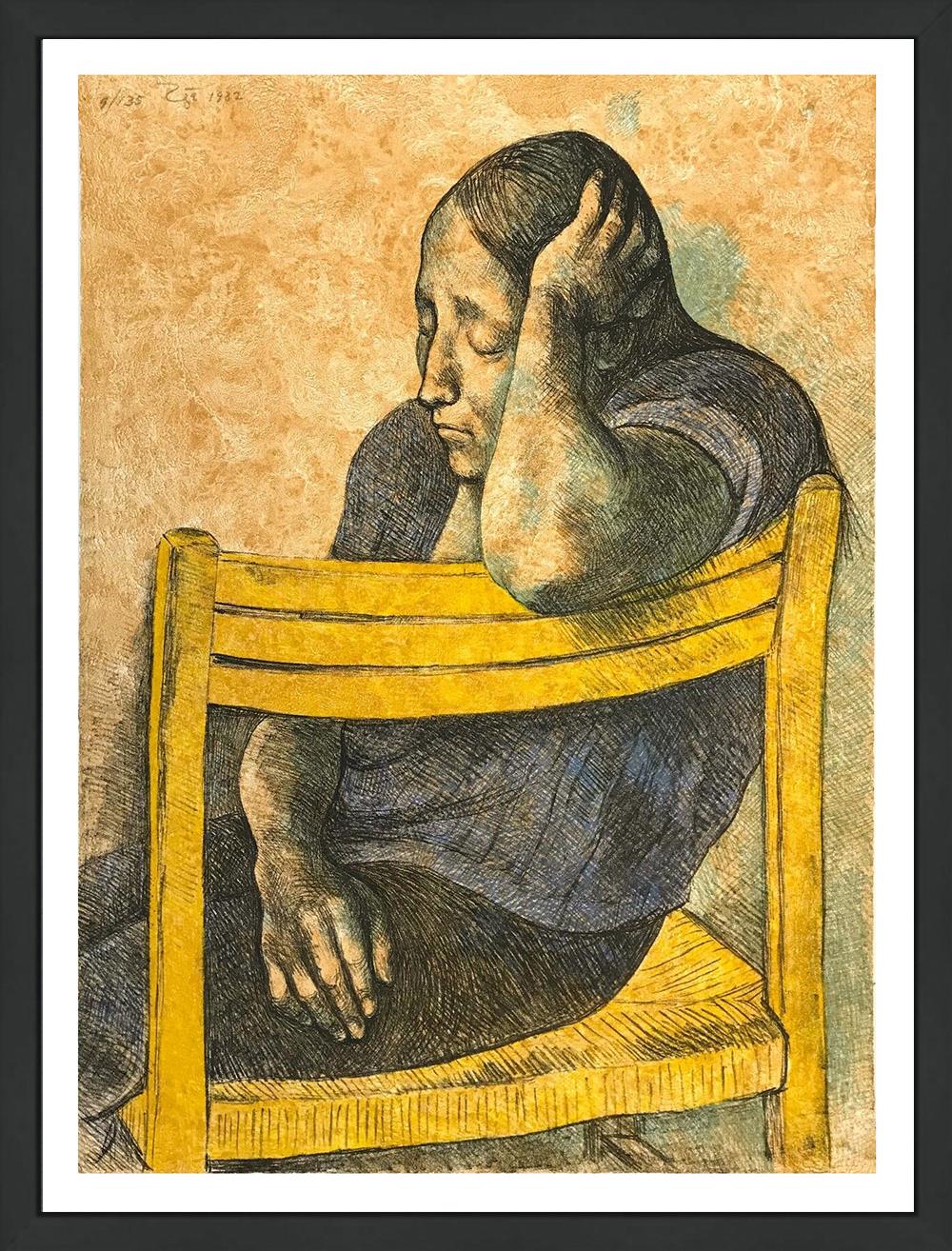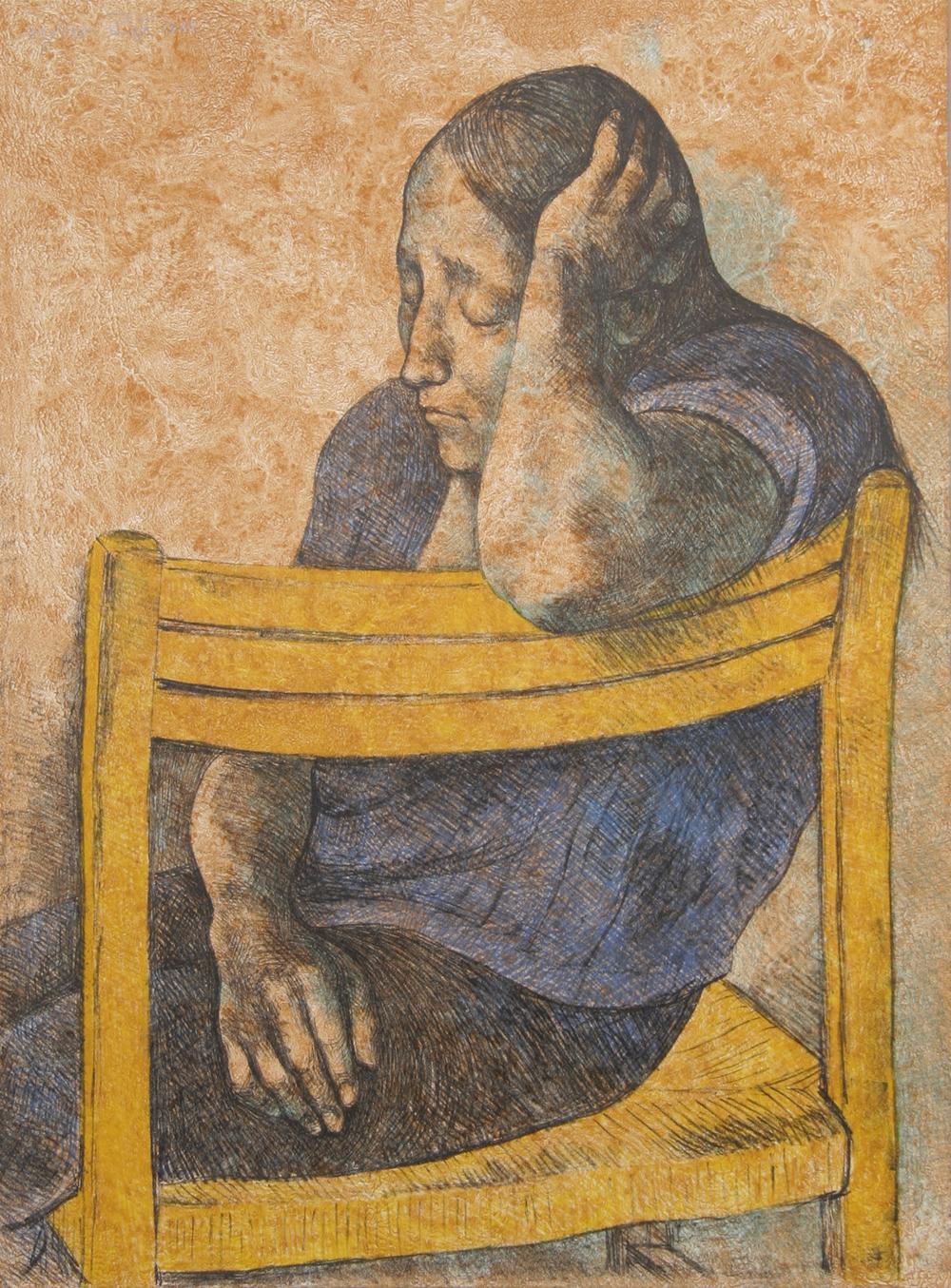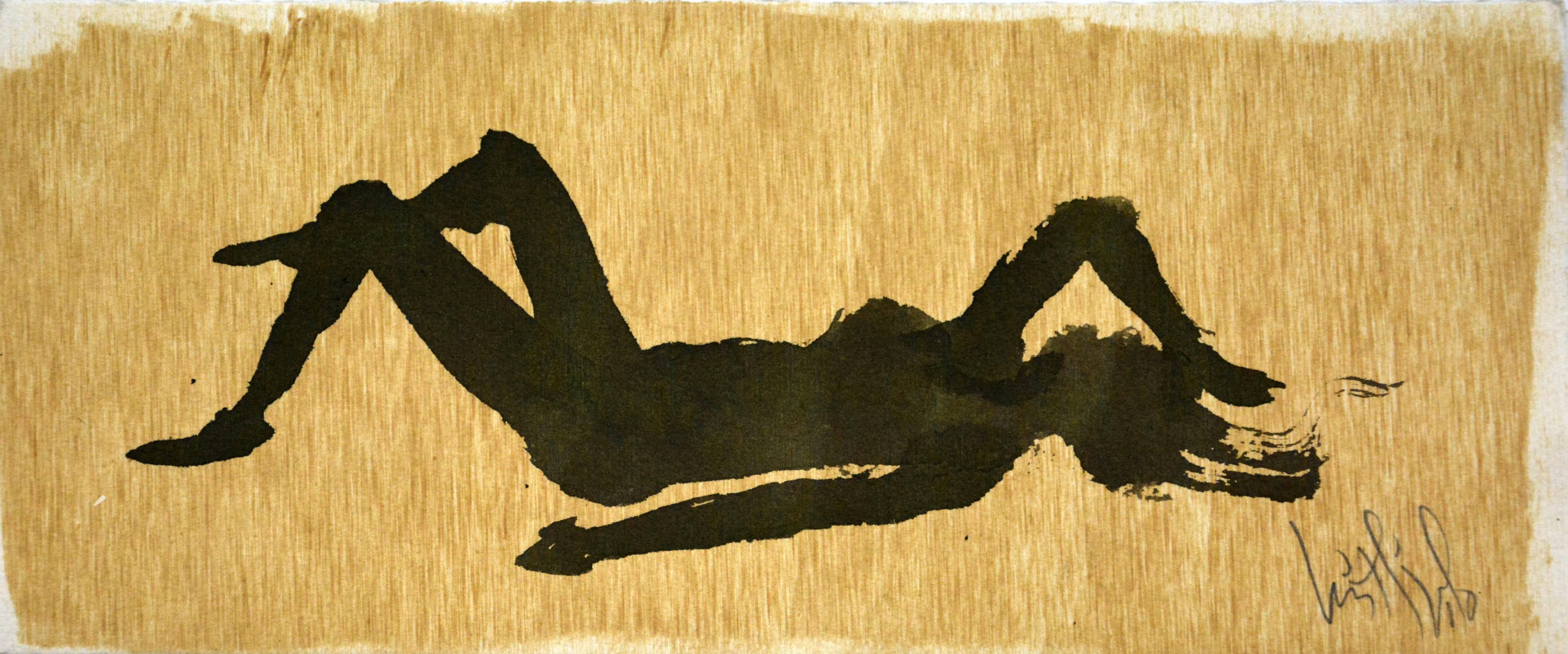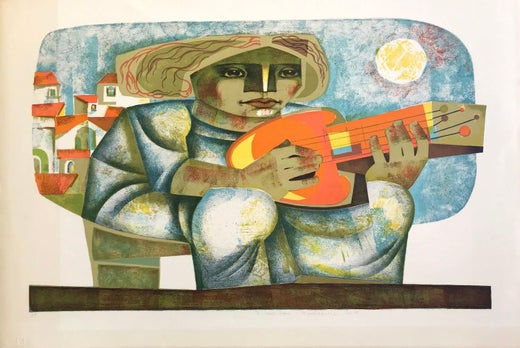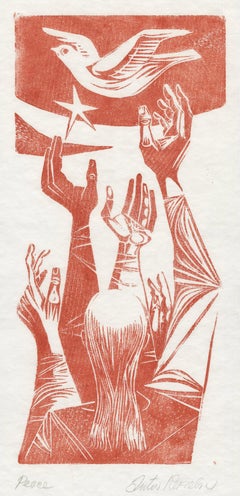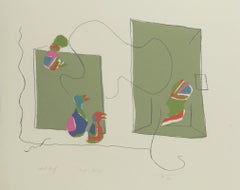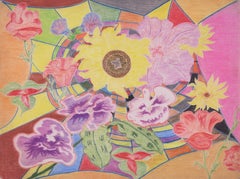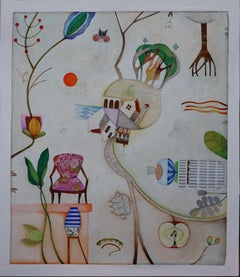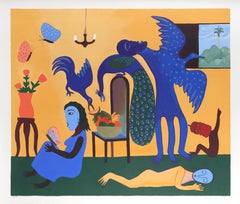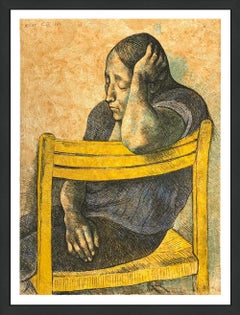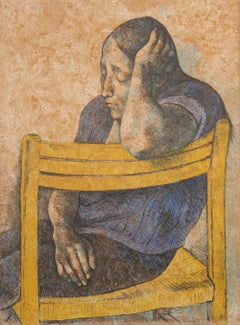Items Similar to Descanso (Break)
Want more images or videos?
Request additional images or videos from the seller
1 of 2
Jorge DumasDescanso (Break)1975
1975
$400
£302.50
€346.49
CA$560.50
A$611.87
CHF 322.16
MX$7,329.53
NOK 4,120.29
SEK 3,761.90
DKK 2,588.37
About the Item
Signed, titled and numbered in pencil
Edition: 250 (5/250)
Signed, titled and numbered in pencil
Published by Circle Gallery Ltd.
Printer: Atelier Dumas, New York
Condition: Very good
Atelier Dumas opened in New York printing own work as well as
those of Peter Max, Agam, Romare Bearden, Dali, Erté, Peter Hurd,
Ting, Karl Appel, Corneille, Vasarely, Omar Rayo, Sznajderman,
Alpuy, Sanin, Bonevardi.
PERMANENT COLLECTIONS
A.G.P.A. Collection
Museo de Contemporary Arts, Caracus, Venezuela
Biblioiteca Nacional de Caracas, Venezuela
Ateneo de Valencia, Valencia, Venezuela
Museo Nacional de Artes Graficas, Maracaibo, Venezuela
Bibliotec National des Estampes, Paris, France
Instituto Nacional de Bellas Artes, Mexico
Museo de Bellas Artes, Bogotá, Columbia
Museo de Arte Moderno “La Tertulia” Cali, Columbia
Instituto de la Cultura, San Juan, Puerto Rico
Study Collection, Print Department, Museum of Modern Art, New York City
Courtesy Jorge Dumas
- Creator:Jorge Dumas (1928 - 1985, Uruguayan)
- Creation Year:1975
- Dimensions:Height: 10 in (25.4 cm)Width: 8 in (20.32 cm)
- Medium:
- Movement & Style:
- Period:
- Condition:Never framed or matted Excellent original condition.
- Gallery Location:Fairlawn, OH
- Reference Number:Seller: FA114491stDibs: LU1405675141
Jorge Dumas
Jorge Dumas studied drawing and painting at Taller Torres Garcia and first exhibited his drawings in 1946 with the Hungarian sculptor Anthony Khun, São Paulo, Brazil. In the 40s and 50s, he traveled widely in South America, working as a set designer, newspaper illustrator, and teaching drawing. In the early sixties, he traveled and exhibited in the United States, collaborating on a mural at the Pan American Union Building in Washington, D.C. Throughout the 70s and 80s, his reputation earned him individual exhibitions across North and South America.
About the Seller
5.0
Recognized Seller
These prestigious sellers are industry leaders and represent the highest echelon for item quality and design.
Gold Seller
Premium sellers maintaining a 4.3+ rating and 24-hour response times
Established in 1978
1stDibs seller since 2013
835 sales on 1stDibs
Typical response time: <1 hour
Associations
International Fine Print Dealers Association
- ShippingRetrieving quote...Shipping from: Fairlawn, OH
- Return Policy
More From This Seller
View AllJugentud (Youth)
By Jorge Dumas
Located in Fairlawn, OH
Jugentud (Youth)
Color lithograph, 1975
Signed, numbered and titled in pencil (see photos)
Edition: 250 (67/250)
Signed, titled and numbered in pencil
Published by Circle Gallery Ltd...
Category
1970s Contemporary Figurative Prints
Materials
Lithograph
Peace
By Anton Refregier
Located in Fairlawn, OH
Peace
Woodcut printed in orange red ink on japanese paper
Signed and titled in pencil lower right (see photo)
Titled lower left (see photo)
Created along with an illustrated book project Song of Peace, 1950-1959.
Condition: Excellent
Image: 10 1/2 x 4 7/8"
Sheet: 16 1/8 x 7";
Anton Refregier (March 20, 1905 – October 10, 1979) was a painter and muralist active in Works Progress Administration Federal Art Project commissions, and in teaching art. He was a Russian immigrant to the United States.
Among his best-known works is his mural series The History of San Francisco, located in the Rincon Center in downtown San Francisco, California. It depicts the city's history across twenty seven panels that he painted from 1940 to 1948.
Life and early career
Refregier was born in Moscow and emigrated to the United States in 1920. After working various odd jobs in New York City, he earned a scholarship to the Rhode Island School of Design in 1921. After finishing school, Refregier moved back to New York in 1925. To earn a living, Refregier worked for interior decorators, creating replicas of François Boucher and Jean-Honoré Fragonard paintings...
Category
1950s American Modern Figurative Prints
Materials
Woodcut
Things Kept
Located in Fairlawn, OH
Things Kept
Color lithograph, 1970
Signed & titled in pencil (see photos)
Annotated: "Artists Proof"
Printed on RIVES wove paper
Condition: Excellent
Sheet has aging consistent with ...
Category
1970s American Modern Abstract Prints
Materials
Lithograph
untitled (Reclining Female Nude)
By Charles Harris ( Beni Kosh )
Located in Fairlawn, OH
Aka Beni Kosh
Still Life with Flowers
Colored pencil on paper
Unsigned
Signed with the estate stamp on reverse (see photo)
Estate No. 716
Condition: Soft fold through image, wri...
Category
1960s Contemporary Still-life Drawings and Watercolors
Materials
Gouache
Mayan Trio
By Francisco Dosamantes
Located in Fairlawn, OH
Mayan Trio
Lithograph, 1950
Signed in pencil lower right (see photo)
Edition 250 for Associated American Artists
Publsihed 1950
Reference: AAA Cat.: 1950‑05; 1958‑01
AAA Index 1087
Condition: Excellent
Image size: 13 x 9 1/2 inches
Francisco Dosamantes (b. October 4, 1911 - d. July 18.1986) was a Mexican artist and educator who is best known for is educational illustrations and graphic work against fascism. He was a founding member of the Taller de Gráfica Popular and the Salón de la Plástica Mexicana.
Life
Francisco Dosamantes was born in Mexico City on October 4, 1911. His father was Daniel Dosamantes who was a builder, interior decorator and painter. He was not registered into the civil registry until he was about twenty years old on March 6, 1939. His mother’s name is not listed on the certificate. As a child, he demonstrated a strong interest in drawing and color, influenced by his father and his uncle Juan. The Mexican Revolution occurred while he was a young child and he stated that he remembered events such as soldiers on horses charging as well as the execution of rural farm workers.
He attended primary and high school in Mexico City but stated that his education was irregular and deficient. He then entered the Escuela Nacional de Artes Plásticas, where he studied for five years. Initially, however, he was disappointed with the inexperience of the young professors and he left for a short time to study on his own. During this time, some of the dissatisfied professors organized the 30 30 group against the academic system of the school and which whom he sympathized. The effort gained the attention of established artists such as Diego Rivera who intervened.
He died on Mexico City on July 18, 1986
Career
After he graduated, he worked with the cultural missions of the Secretaría de Educación Pública in Oaxaca, Michoacán, Guerrero, Colima, Coahuila and Chihuahua (state) from 1932 to 1937 then again from 1941 to 1945. He stated that this experience was vital to his conscience as he worked with rural farm workers and others he stated were worthy of dignity and respect, but victims of deceit and exploitation. When he returned to Mexico City, he gave classes in high schools from 1937 to 1941. In 1945 he founded and directed the Taller Escuela de Dibujo y Pintura “Joaquín Claussell” in Campeche, Campeche.
Dosamantes was a politically and culturally active artist with most of his work and affiliations related to such. He was a member of the Liga de Escritores y Artistas Revolucionarios from 1934 to 1938. He was a founding member of the Taller de Gráfica Popular, serving as administrator in 1940 and remaining a member until his death except for one short hiatus. He created posters for conferences about fascism and Nazism such as Alemania bajo bayonetas (Germany under bayonets) in 1938. In 1940 he became the secretary general of the Sindicato de Maestros de Artes Plásticas. He was also a member of the Sociedad para el Impulso de las Artes Plásticas en 1948, a founding member of the Salón de la Plástica Mexicana in 1949 and a member of the Frente Nacional de Artes Plásticas from 1952.
He painted a number of murals in rural areas of Mexico generally when he was there on cultural missions. His main mural is at the former home of José María Morelos in Carácuaro, Michoacán, but there are a number at various rural schools. These were all painted between 1941 and 1946.
As a book illustrator he mostly worked for the Secretaría de Educación Pública working on books for literacy campaigns.
He exhibited his works, which included engravings, oils, tempuras and lithographs in Mexico and abroad. His first individual exhibition was in 1930 at the Galeria de Arte Moderno in Mexico City. His major exhibitions include the Excelsior Gallery in Mexico City in 1932, various exhibitions in New York, Washington, Philadelphia and Los Angeles in 1937; the Nelson Gallery of Art in Kansas City, Missouri in late 1947, and the Gallery of Mexican Art in...
Category
1950s American Modern Figurative Prints
Materials
Lithograph
Read the Signs #3
By Darius Steward
Located in Fairlawn, OH
Read the Signs #3
Watercolor on Yupo paper, 2013
Signed lower right (see photo)
Series: Read the Signs (22 watercolors)
Depicts the artist's relative Jaylen
...
Category
2010s Contemporary Figurative Drawings and Watercolors
Materials
Watercolor
You May Also Like
"Descanso" (Rest). Symbolic Paint. Folk Art Landscape.
By Raquel Fariñas
Located in Segovia, ES
"Descanso" (Rest).
Symbolic paint. Folk Art Landscape by spanish artist Raquel Fariñas.
Acrylic mixed media/ wood panel, 69 x 60 x 4 cm. In inches: 27.17" x 23.62" x 1.57"
The paint...
Category
2010s Folk Art Figurative Paintings
Materials
Mixed Media, Acrylic, Wood Panel
El reposo
By Manuel Mendive
Located in Miami, FL
Beautiful Serigraph print on paper by the Cuban artist Manuel Mendive.
El Reposo, 2021
Lithograph
23,5 x 29 in
Ed. 10 of 100
Signed and numbered by the artist.
Manuel Mendive is an ...
Category
21st Century and Contemporary Contemporary Figurative Prints
Materials
Laid Paper, Screen
MUCHACHA EN UNA SILLA
By Francisco Zúñiga
Located in Aventura, FL
Hand signed, dated and numbered by the artist. Edition of 135. Frame size approx 29 x 23 inches.
Artwork is in excellent condition. Certificate of Authenticity included. All reaso...
Category
1980s Contemporary Figurative Prints
Materials
Lithograph, Paper
$1,750 Sale Price
30% Off
Muchacha en una Silla, Expressionist Lithograph by Francisco Zuniga
By Francisco Zúñiga
Located in Long Island City, NY
Artist: Francisco Zuniga, Mexican (1912 - 1998)
Title: Muchacha en una Silla
Year: 1982
Medium: Lithograph, signed and numbered in pencil
Edition: 135
Size: 23 in. x 17 in. (58.42 cm...
Category
1980s Expressionist Figurative Prints
Materials
Lithograph
Luis Miguel Valdes, ¨Descanso¨, 2010, Work on paper, 5.7x13.4 in
By Luis Miguel Valdes
Located in Miami, FL
Luis Miguel Valdes (Cuba, 1949)
'Descanso', 2010
ink on paper
5.8 x 13.4 in. (14.5 x 34 cm.)
ID: 1D201006
Hand-signed by author
______________________________________________
Biograp...
Category
2010s Contemporary Drawings and Watercolor Paintings
Materials
Paper, Ink
NINA DE ROSA
By Gustavo Montoya
Located in Aventura, FL
Hand signed, dated and numbered by the artist. Artwork is in excellent condition. Certificate of Authenticity included. All reasonable offers will be considered.
Category
1980s Contemporary Figurative Prints
Materials
Lithograph, Paper
$1,125 Sale Price
25% Off
More Ways To Browse
Vintage Dumas
Leon Gilmour
Leon Golub On Sale
Leroy Neiman Garden
Leroy Neiman Wine
Les Deux Amies Corneille
Lichtenstein Yale
Lincoln In Dalivision Lithograph
Louis Delsarte
Luciano Guarnieri
Luigi Caldanzano
Luis Vidal Molne
Manlio Bacosi
Marc Chagall Art Books
Marc Chagall Bible Series
Marc Chagall Granada
Marc Chagall Green River
Marc Chagall Odyssey
